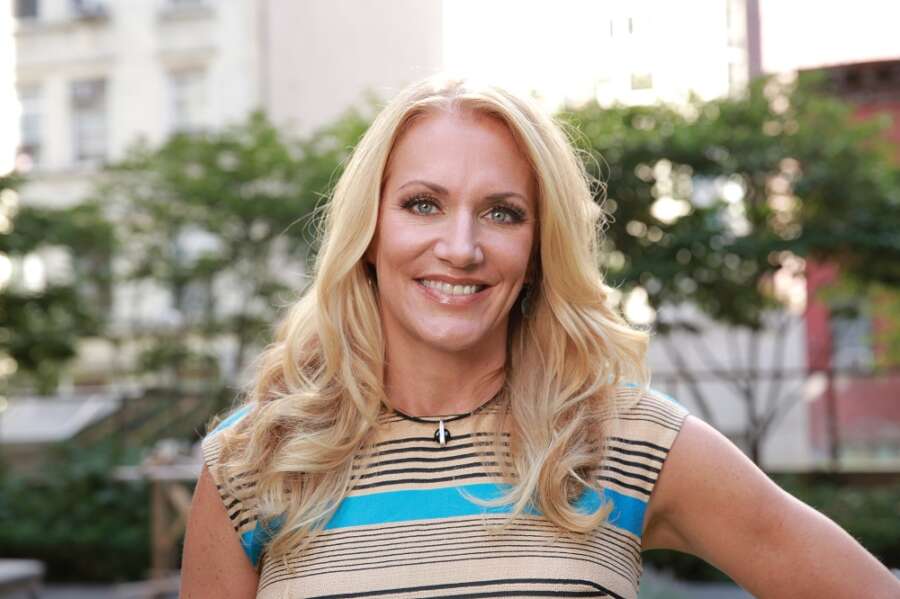
Julie Roehm is an experienced marketing and customer success professional with a unique take on the industry and how women in particular can overcome challenges to find professional and personal success. Roehm herself has always sought out challenges that help her grow as an individual, leaving more comfortable positions for those that tested her skill set and pushed her to learn and adapt. One example of this is her resurrection of the Dodge brand and being named Marketer of the Year by BrandWeek, among other accolades.
Recently, Roehm was asked to speak at the 2023 GDS CMO Summit as part of the Innovation Exchange Keynote. This included an overview of how to set a transformation strategy for a brand and the pivotal nature of creating advocates and ambassadors out of board members and c-suite peers. In explaining her experiences, Julie Roehm pulled from her time as Chief Experience Officer at Party City, presenting a case study on growth strategy and business development, which she oversaw during steady times as well as during the supply chain crisis created by the COVID-19 pandemic.
As a professional marketing executive and thought leader in the digital marketing and transformation space, Roehm’s presentation was full of advice for leaders at all stages in their careers. Her own career has spanned a variety of customer engagement and satisfaction roles. In recognition of her achievements, Julie Roehm was also awarded an OnCon Icon award, making her a top 100 marketer in 2023.
Keys to Transformation from Julie Roehm
Transformation takes a number of different forms according to Julie Roehm, from smaller change management oversight to alterations necessitated by organic corporate growth. Change management, Roehm posits, is much more than managing change. It’s a complex array of tasks that require someone skilled in the process to oversee it for the company to experience success. When leaders consider that change management is more than processes and encompasses the people side of the business as well, they can work together to ensure smoother transitions and the right resources for the right people at the right time.
Gaining the support of a board of directors is also essential for effective transformation, especially during challenging times. She noted that “as adversity inevitably strikes, then sometimes the board or some of the board members can wane,” and leaders need to do their best to engage their board and c-suite to understand the importance of embracing change when it is necessitated. Roehm also explained that “a transformation isn’t an overnight scenario. It is a journey.”
She shared how her role encompassed a wide variety of marketing and customer experience divisions in the company but that “nothing happens without the entire ELT, the executive leadership team.” She was able to coordinate efforts for transformation within her own teams while also communicating the need for evolution with the leaders of the company to get change management to take hold across the board. To do this, Roehm recommended that managers and leaders continuously communicate with other teams regarding their goals, outcomes, and changes in process. This can help them to create advocates and ambassadors across the organization that will champion for change, even in the face of those more risk-adverse individuals who are likely to resist.
Julie Roehm’s Examples from Party City
Roehm shared that one way Party City was designed to weather difficulty was through its integrated marketing approach. Rather than relying solely on sales from its own stores, the brand took advantage of wholesale opportunities and outsourced or manufactured products for other brands. This allowed it to diversify its success across a number of different retailers and make its products available to consumers in more places. By diversifying, Party City was better able to manage adversity when it struck, from declining numbers in its own stores over time to the struggles to get products out to the masses during supply chain issues.
Another example Roehm provides is how the brand used its sales figures to learn more about its customers as a whole. This allowed Party City to be an “expert on celebration,” which was valuable on direct sales and manufacturing fronts as well as on the wholesale side of the business. “You can package that and use that with the wholesale and sales team, the manufacturing team to provide insights into what we’re manufacturing…you’re able to use that in the selling process on a wholesale side because we know more than they do.”
Party City also discovered they had more to gain and grow from by converting from a SKU-based seller to a solution-based seller. Roehm noted that, as chief experience officer, she realized the brand was in the experience business with customers, helping them create memories and celebrate occasions in novel ways. In turn, Party City pivoted to create a roadmap that paired with a transformation strategy around this concept, helping consumers look to the brand more holistically for experiences rather than just spare items for an event.
Understand Adversity is Part of the Picture
Julie Roehm said it best during her presentation: “Those best laid plans that I shared with you are great, but adversity will find you.” The most clear and relatable example of this is the impact the COVID-19 pandemic had on businesses the world over, and Roehm’s Party City was no exception. The company’s leadership leaned into the adversity together and came up with innovative solutions to help keep their products relevant and accessible despite the many challenges the disruption caused. While the transformation was daunting, the executive team remained committed to its strategic tactics and initiatives, learning to be flexible as supply chain issues intervened to create additional complications.
Roehm shared that even out of adversity, which is certain to strike even if not on the scale of a global pandemic, new innovations and changes can take effect that are beneficial to the entire company. Through making updates to their online offerings, for example, the team was able to streamline their ordering process. This not only made it easier for customers to navigate and complete the purchasing process but also increased the number of items they bought and the frequency with which they made purchases.
More than ever before, leaders need to learn to be flexible with their understanding of the market, customers, and goals. Being willing to embrace transformation, whether or not it is precipitated by adversity, is the sign of a solid leader with an understanding of their industry and clientele. “You can stick with the strategy, but it doesn’t mean you can’t be somewhat flexible with the initiative,” explained Roehm in closing her presentation. Looking back on her experience at Party City as well as other prior positions she has held, “the one constant that allowed us to be successful in the work that we did in both instances was a CEO who was in lockstep… With the CEO aligned, then you can really have a great advocate on the board.” This alignment remains key for any company to manage and implement a transformation of any shape or size.


